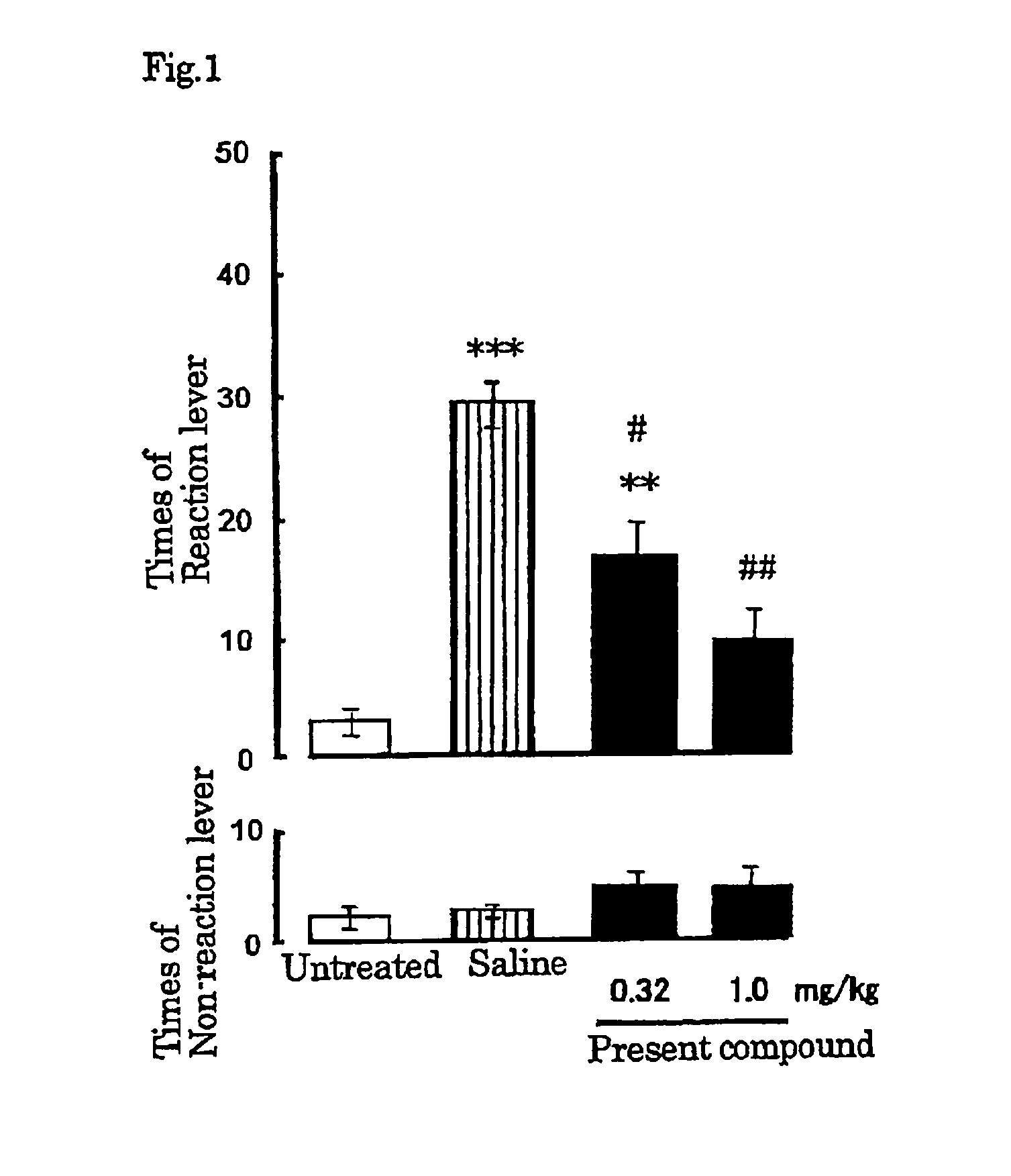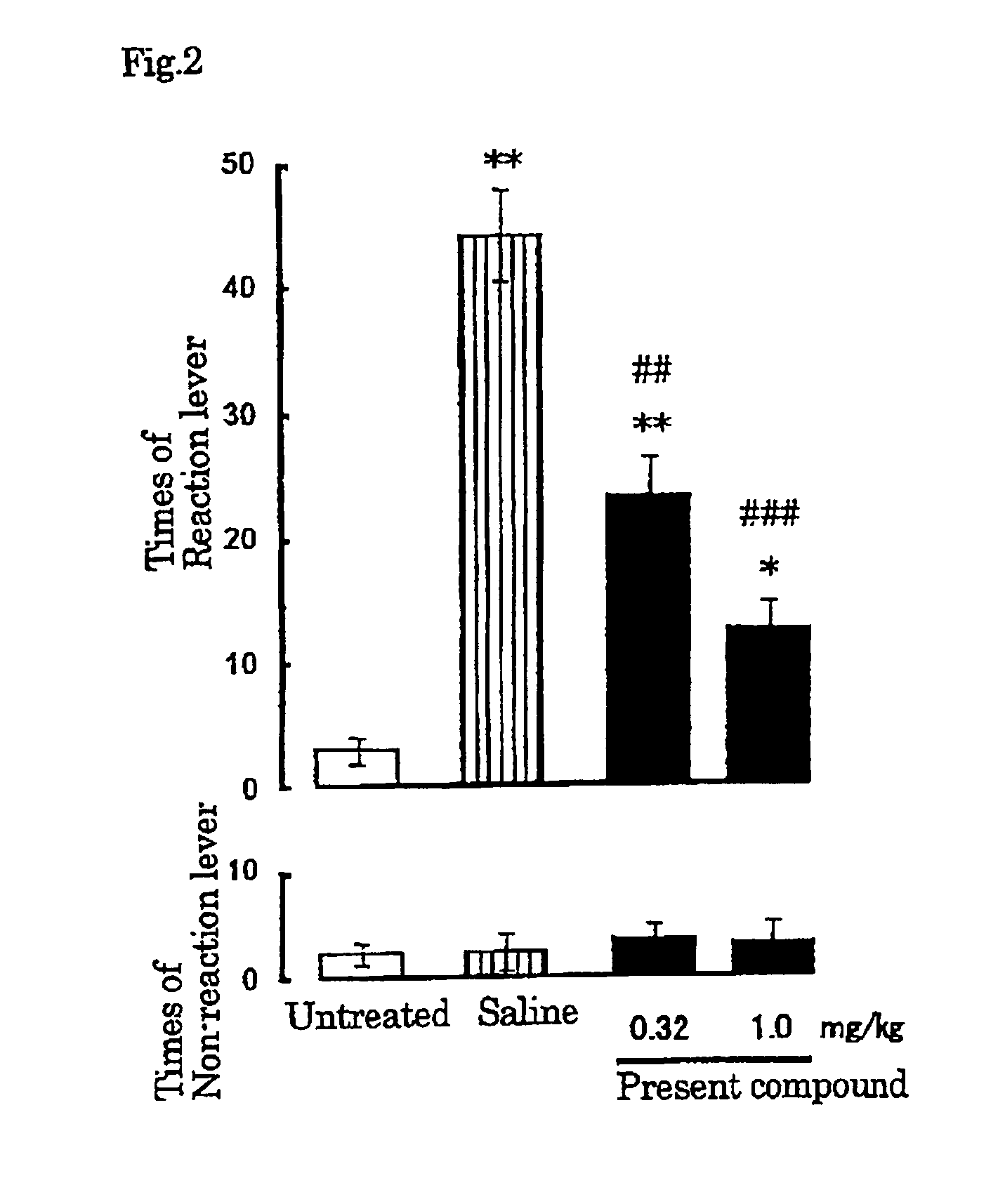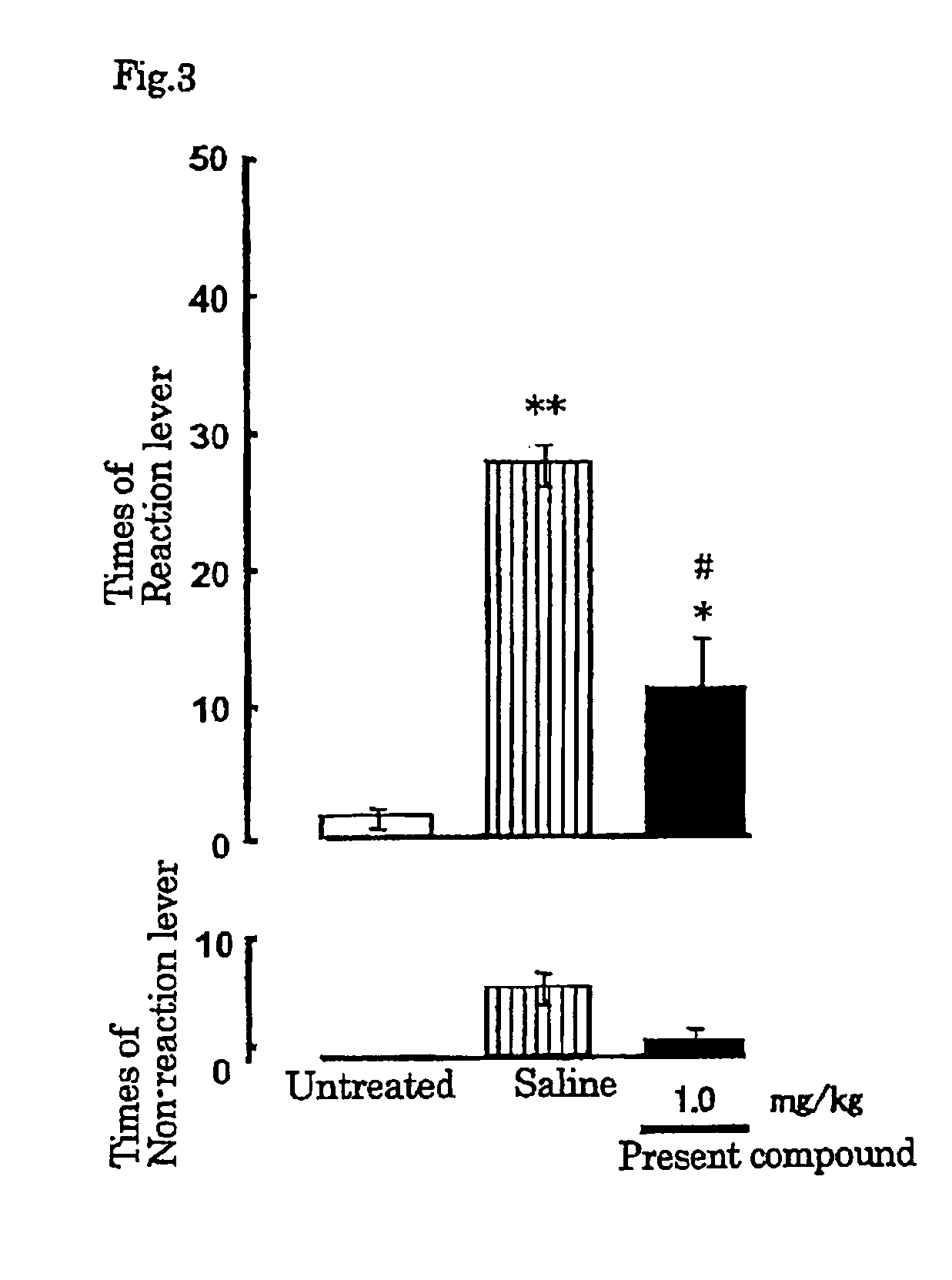Therapeutic agent for substance dependence
a technology for drugs and dependence, applied in the direction of biocide, heterocyclic compound active ingredients, drug compositions, etc., can solve the problems of not only serious social problems, but also medical problems, and the inability to keep away from substances,
- Summary
- Abstract
- Description
- Claims
- Application Information
AI Technical Summary
Benefits of technology
Problems solved by technology
Method used
Image
Examples
example 1
[0041]Effects on addictive substance-seeking behavior
[0042]Using methamphetamine as an addictive substance, the following experiments were carried out according to a method described in Neuropsychopharmacology, 29, 1470-1478 (2004).
Preparation of Experimental Animals
[0043]A catheter for self-administration of methamphetamine (inner diameter of 0.5 mm, outer diameter of 1.0 mm) was inserted into the right jugular vein of male Wister / ST rats (250 to 350 g), and the end of the catheter was anchored to just outside the right atrium. An operant box used in the experiment was equipped with 2 levers. One is an active lever by which when pressed once (fixed-ratio 1 (FR1)), infusions of a very low dose of methamphetamine (0.02 mg per injection) was paired with onset of a 6-sec tone (70 dB / 7 kHz) and light (300 lux) compound stimulus. The other is an inactive lever by which neither the drug-associated cue nor the infusion of methamphetamine are given.
[0044]After the animal was allowed to get ...
experiment 1
ry Effect by Single Administration of the Compound of the Present Invention on Substance-Seeking Behavior
[0047]On day 6 of the extinction process, substance-seeking behavior (“craving”) was induced by drug-associated cue (tone and light) or by administering a low dose of methamphetamine (1.0 mg / kg, intraperitoneal (i.p.) administration).
[0048]Thirty minutes before this stimulation with the drug-associated cue or by the administration of a low dose of methamphetamine, signal administration of the compound of the present invention (0.32, 1.0 mg / kg, i.p.) was carried out, and a change in the methamphetamine-seeking behavior induced by drug-associated cue or by forced administration of methamphetamine was observed. As a result, the seeking behavior was suppressed significantly and dose-dependently (FIGS. 1 and 2).
experiment 2
ry Effect of Repeated Administration of the Compound of the Present Invention on Substance-Seeking Behavior
[0049]In the extinction process for 5 days, the compound of the present invention (1.0 mg / kg, i.p.) was repeatedly administered, and a change in the methamphetamine-seeking behavior induced by drug-associated cue or by forced administration of methamphetamine was observed. As a result, the seeking behavior was suppressed significantly (FIGS. 3 and 4).
PUM
| Property | Measurement | Unit |
|---|---|---|
| weight | aaaaa | aaaaa |
| weight | aaaaa | aaaaa |
| outer diameter | aaaaa | aaaaa |
Abstract
Description
Claims
Application Information
 Login to View More
Login to View More - R&D
- Intellectual Property
- Life Sciences
- Materials
- Tech Scout
- Unparalleled Data Quality
- Higher Quality Content
- 60% Fewer Hallucinations
Browse by: Latest US Patents, China's latest patents, Technical Efficacy Thesaurus, Application Domain, Technology Topic, Popular Technical Reports.
© 2025 PatSnap. All rights reserved.Legal|Privacy policy|Modern Slavery Act Transparency Statement|Sitemap|About US| Contact US: help@patsnap.com



